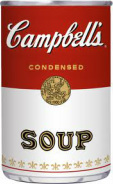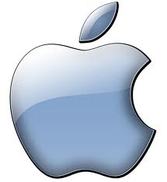In the information overload that is the internet, we have many trusted sources for information. Each source has a perspective, facts and opinion. This Mashup examines what we can learn overall, combining disparate sources and developing a Takeaway – which may not necessarily be a proven truth, but should be a consideration to follow, something to mull about in the back of our minds, and as we gather more information in the days to come, either prove the Takeaway as a coming trend, or toss it as a passing fancy.
Campbell’s Soup is one of the great supply chain stories before anyone knew to call them supply chains. You’d study Campbell‘s innovation in your MBA courses for their forward thinking going back as far the late 1800’s. By developing a commercially viable method of condensing soup, they cut the heaviest ingredient – water – in half – saving shipping weight, allowing more varieties of soup to be displayed in the same shelf space, and so on.
(It was pretty interesting at a 2008 Supply Chain West convention when a representative from WalMart was talking about the green revolution – and they discussed how detergent makers (Tide, etc) with their new formulations for HE (High Efficiency) washers which used more concentrated formulation (which by definition is taking out the water, just like Campbell’s), saving product weight, which translated into saving shipping costs, saving fossil fuel to transport the products and shelf, truck and warehousing space, and so on – it’s really true, everything old gets new again.)
Recently, Apple’s innovation has iPads and iPhones moving into the corporate workspace like never before (there are dozens of articles saying the same thing but, CIO Insight has a representative article in today’s issue here.)
I was thinking back to November 2011 and one of my ERP clients who were rolling out iPad devices for remote order entry to their sales force. As we were designing the project, we brought in the technical engineers – and they highly recommended going with Android tablets ‘because the specs were better.’
This has been an age old discussion in the tech world since Apple was first ridiculed in the press for their ridiculous ‘mouse’ concept back in the early 80’s. (looks like that one worked out a bit better than the critics imagined.) And so it would seem, everything old is new again.
But there are some specs that don’t get the press headlines.
In a recent article on Mac360, Kate McKinsey’s News and Comment uncovers some interesting facts – while iPhone’s unit marketshare is dwarfed by Android competitors, the iPhone collects 80% of the cellphone revenue, leaving 20% of the revenue to be split amongst Samsung, Android, Motorola, Nokia, Microsoft and whomsoever else is banging out a smartphone with a larger screen. (No word on whether Levi’s stock is up on the announcement of the 578 Big Pocket Jeans for Android.)
On another front, 90% of mobile commerce is coming from iOS devices, (that’s iPhones and iPads) – even though the market share, when measured by per-unit basis shows there are far more Android tablets in circulation than iPads.
What gives?
Ms. McKinsey posits that this indicates a different mindset, or different usage pattern by iOS users than Android users.
And while I’ll get dozens, probably hundreds of comments from my more techie brethren as to why Android has demonstrably superior technologies, (and I’m sure they do) I’m not going to approve any of those comments to post below – because that’s missing the entire point.
THE TAKEAWAY
My takeaway is that if 90% of the mobile commerce is coming from iOS, we need to be customer centric in our rollout of ERP apps, mobile strategy, dashboards, whatever – reach the people who count – regardless if they’re using iPads, iPhones or even an abacus – (harder to write an app for that- because the specs are really bad – but you’d have 100% marketshare if you did!)
So why all the bad news about Apple in the press?
Remember, the press has one agenda – get readers! And they’re pretty good at it, but our agenda is to make money – and we need to look a little deeper than the headlines.
Reporter Clint Boulton spoke with Campbell’s CIO Joseph Spagnoletti and found the IT discretionary spend focus went from 100% Back Office (usually ERP and related applications) to 80% customer facing apps – and over 100 cloud based technologies.
They cite several supply chain tools, which you can read about yourself, but also BI and customer analytics. (I’ve seen more of my clients driving strategic turnarounds with better data than any other single type of application software).
But what I wanted you to pick up on is Campbell’s has over 100 apps already deployed to drive market share in 2013. So if you’re looking at new software or IT projects to drive improvement in 2013, I hate to be the one to mention – you’ve missed the boat.
Sure, there are some SaaS Business Intelligence applications that you can get up and running in a few weeks – so if we start looking at what’s right for you today, spend a few weeks looking at demos from the different vendors, we could possibly see useable data by early summer, with a learning curve of a couple of months. So that puts us into late September, early October before you have useable data to start making changes in your business – so yes, we might be able to bump sales by December – but the question is – is one month enough to turn your 2013 business around?
Other applications for supply chain, order automation, warehouse improvements and especially ERP can take much longer than BI to implement and start producing results.
THE TAKEAWAY
So if we’re going to be strategic in our IT and software projects, we need a multi-year roadmap.
Do you need to cut warehouse labor in 2014? Do you want a tighter supply chain cost analysis by fall of this year?
Are you going to outgrow your ERP in 2015? If so, you should be looking at the final vendors today and planning your decision as to which ERP by no later than Spring 2013 – or the next 8 weeks!
The question is, how do you know if you’ll need these system improvements two years from now? The only way is to look at realistic ROI assessments – for example, do we need to keep 5 hotshot delivery trucks on the road all week to fill shorted orders? Or can we use better planning and inventory tools to eliminate four trucks, four driver positions (or better yet, convert them to new, profitable expanded routes and delivery areas) with huge cost savings in time, trucks and labor?
That’s where you’ll need an experienced Software Consultant to help uncover and identify areas of potential improvement.
You can start with the Contact Us form below or contact gh@genehammons.com – we’ll gladly take on assignments within our area of expertise or forward you the names of the right consulting resources.




